Iliotibial Band Syndrome
Iliotibial Band Syndrome or ITBS is sometimes generally referred to as "Runner's Knee".
It is a common overuse injury that is experienced in many repetitive movement sports such as running.
Anatomy of ITBS
The iliotibial band extends from the gluteus muscles (buttocks) to the outside edge of the patella and knee bones.
The band serves as a stabilizing mechanism to the outside of the hip bone and to prevent internal knee rotation during each running step that you take.
Refer to the following picture for a visual.
Knee Muscles (view from back)
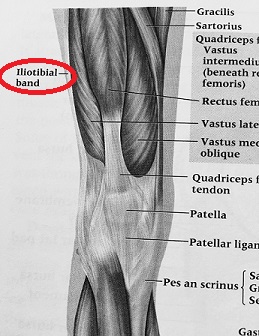 Taken from 'Arnheim's Principles of Athletic Training'
Taken from 'Arnheim's Principles of Athletic Training'Knee Bones (view from front)
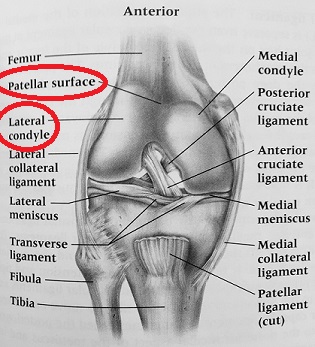 Taken from "Arnheim's Principles of Athletic Training"
Taken from "Arnheim's Principles of Athletic Training"Causes of Iliotibial Band Syndrome
Research, up until recently, has described iliotibial band syndrome as friction that develops by the band rubbing over the lateral femoral condyle of the knee bone.
This rubbing causes pain with each step that you take.
However, more recently, exercise scientists have been redefining this description as a thickening of the fascia lata of the thigh muscles which becomes compressed during your step gait while running.
When the fascia lata (tissue) becomes thicker, it becomes tighter and causes pain.
Those who commonly experience iliotibial band syndrome usually display one of these biomechanical discrepancies:
- Pronated feet
- Genu Varum (bow legs)
- Greater hip external rotation in females
- Greater ankle internal rotation in males
How to Treat Iliotibial Band Syndrome
The most common treatments are:
- Rest!
- NSAID usage (non-steroidal anti-inflammatory drugs) and
- physical therapy
Your best course of action is to be diagnosed by your doctor, who will probably use the Ober or Renee test to diagnose, and be recommended a treatment program through him.
Other treatments:
Implement ITB flexibility exercises into your conditioning program.
This will help to release any tightness in your iliotibial band. (Flexibility exercises are included at the bottom of this page.)
Strengthen your hip abductor muscles.
Keeping your hip muscles strong will help to keep balance and stability throughout your leg. It will also help to place less stress on your ITB and your knee joint. (Hip strengthening exercises are included at the bottom of this page.)
Try to use a midfoot strike.
If you are a heel striker you are placing an incredible amount of force on your knee each time you hit the ground. Changing your foot strike requires practice but in general if you are trying to "baby" a bad knee you will naturally tend to mid-foot or plantar strike the ground.
Lean forward slightly (don't overdo it!) while you run.
The result of leaning forward is that on impact with the ground you will land closer to your center of mass which will reduce the forces felt at the knee.
Run on flat, level surfaces.
This will help to keep the knee angle constant and larger than the angle at which friction and the pain that ITBS brings can occur.
Increase your step rate (the amount of steps you take per minute while running) by 5-10%.
This is something that might take some coaching but has proven to be effective.
Here are some general guidelines for calculating how to increase your step rate:
1. To find out your step rate, have a friend video you running for one minute.
2. Simply count how many steps you take during that minute and then multiply by 0.05-0.10.
3. The answer will tell you how many steps you should be taking per minute in order to improve your running mechanics.
You can find free metronomes online that will help you set your own personal cadence and re-train yourself to increase your footfall.
How to Avoid ITBS
Many of those who develop ITBS have genu varum (bow legs) and pronated feet.
Therefore one way to prevent the syndrome is by making sure your running shoes work against your pronation.
Get your shoes fitted by a professional
Or someone who can analyze your running footsteps.
Keep your hip muscles strong
Particularly focus on your gluteus and external hip muscles. This is one of the best preventive measures. (See the video below for hip strengthening moves.)
Stretch after running
No matter how lazy you may be feeling. It is so easy to cause tightness in the ITB by just skipping a stretch after you run but this is probably the most effective exercise to perform in keeping iliotibial band syndrome at bay!
(See the video below on how to increase your flexibility and stretch the ITB.)
Employ a mid-foot strike and lean slightly forward.
This will cause you to place less force on the knee when you impact the ground. It also allows you to step almost right on your center of mass. Heel striking is the worst foot strike to use when experiencing ITBS as it places almost all the stress on the knee joint.
When Can You Run Again?
It is as always, best to ease into running.
Start with 1-2 miles/day, 3 days out of the week.
Keep one day of rest between each running day.
Stop running if you feel pain. If you are pain free, increase your mileage by 5-10% the next week.
As always, follow the advice of your health care provider.
Rehabilitating ITBS can be a very long process and it is best to go extremely slow and to barely increase your mileage with each week but it is worth the effort to get your body back to set point.
ITB Flexibility Exercises
For one of these exercises you will need a white Ethafoam Roller.
ITB Hip Stregthening Exercises
A lot of hip strengthening exercises employ the use of a Thera-Band so it is a great idea to add it to your running strengthening collection.
Why Do My Hips Hurt When Running is another article by Whitney from the Mother Runner's, that you might want to take a look at.
Related Pages:
I'd Love to stay in touch!
Join 23,000+ Other runners and receive my weekly training newsletter!
I'll send you my free 24 Hour Timeline Checklist of Things You Should Do After a Long Run when you sign up!
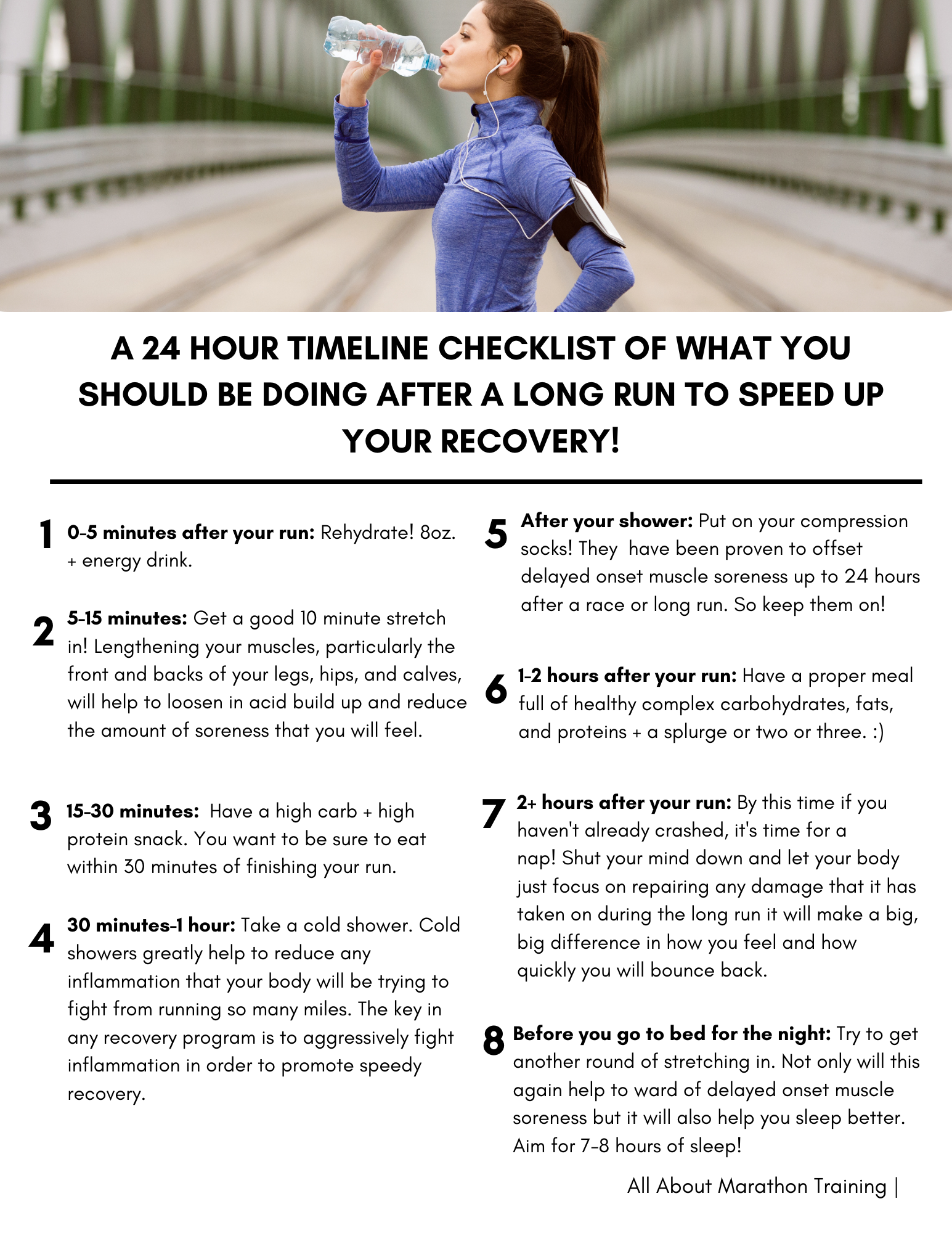
As featured on:

Resources
Allen DJ. Treatment of distal iliotibial band syndrome in a long distance
runner with gait re-training emphasizing step rate manipulation. Int J
Sports Phys Ther. 2014 Apr;9(2):222-31. PubMed PMID: 24790783; PubMed Central
PMCID: PMC4004127.
Cowden CH 3rd, Barber FA. Arthroscopic treatment of iliotibial band
syndrome. Arthrosc Tech. 2013 Dec 19;3(1):e57-60. doi:
10.1016/j.eats.2013.08.015. eCollection 2014 Feb. PubMed PMID: 24843846; PubMed
Central PMCID: PMC4017954.
Orchard JW, Fricker PA, Abud AT, Mason BR. Biomechanics of iliotibial band
friction syndrome in runners. Am J Sports Med. 1996 May-Jun;24(3):375-9.
Review. PubMed PMID: 8734891.
Phinyomark A, Osis S, Hettinga BA, Leigh R, Ferber R. Gender differences in gait kinematics in runners with iliotibial band syndrome. Scand J Med Sci Sports. 2015 Jan 26. doi: 10.1111/sms.12394.
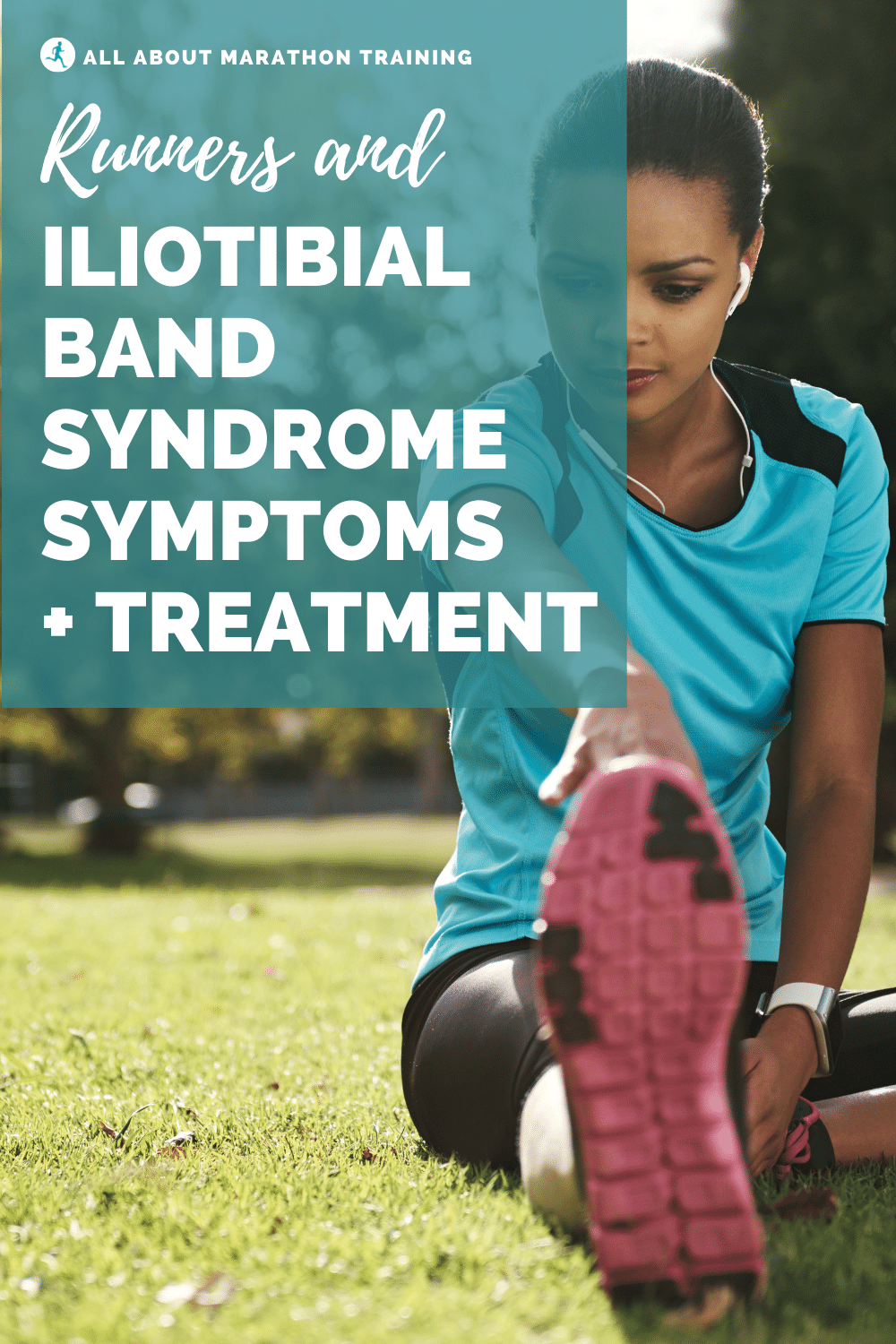
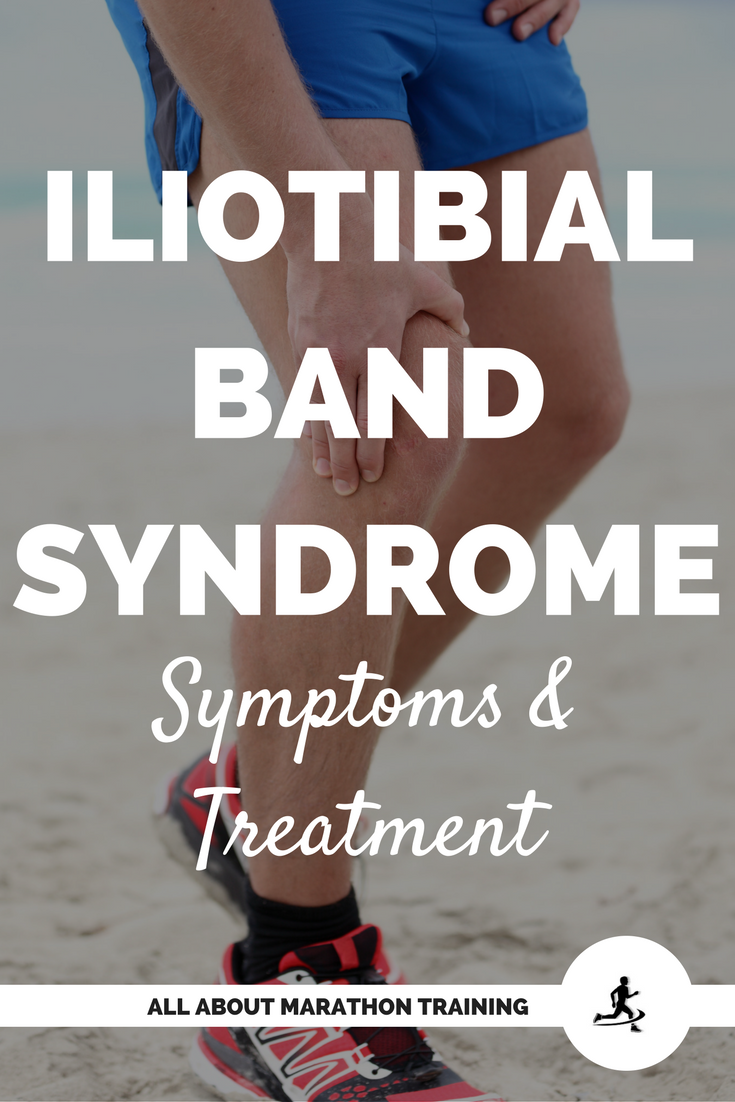
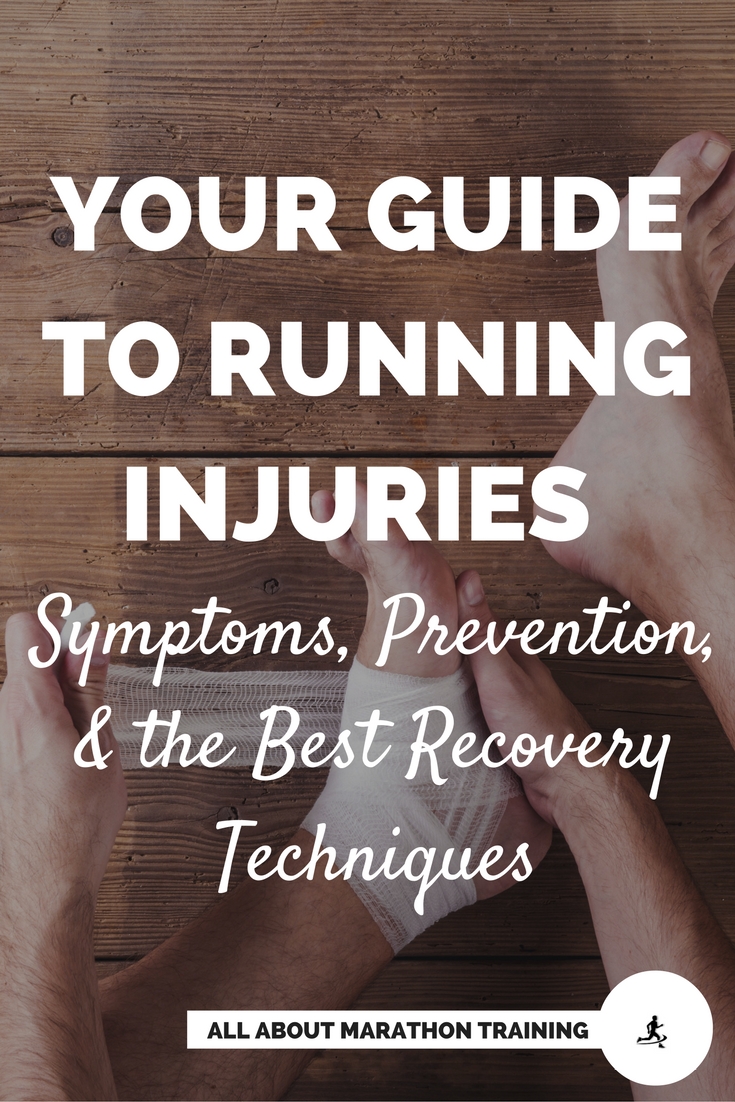
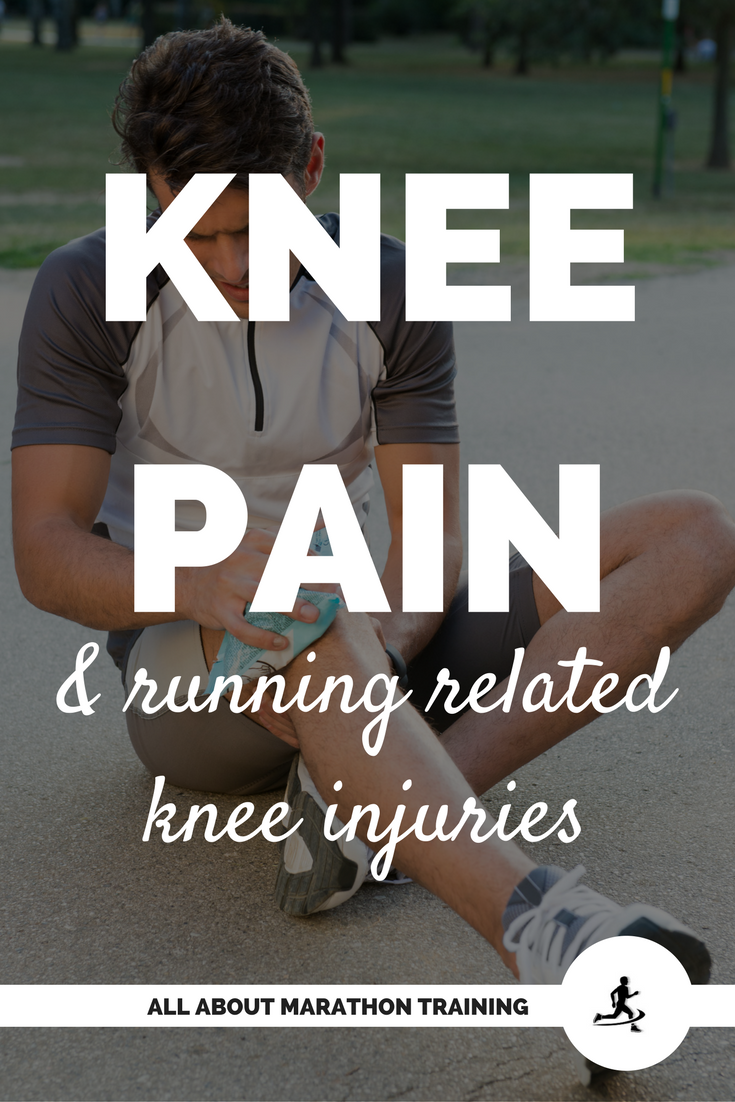

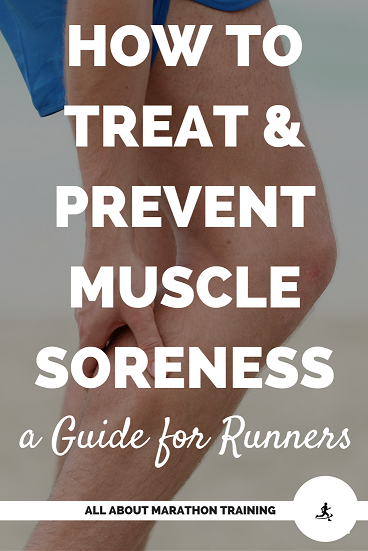

New! Comments
Have your say about what you just read! Leave me a comment in the box below.